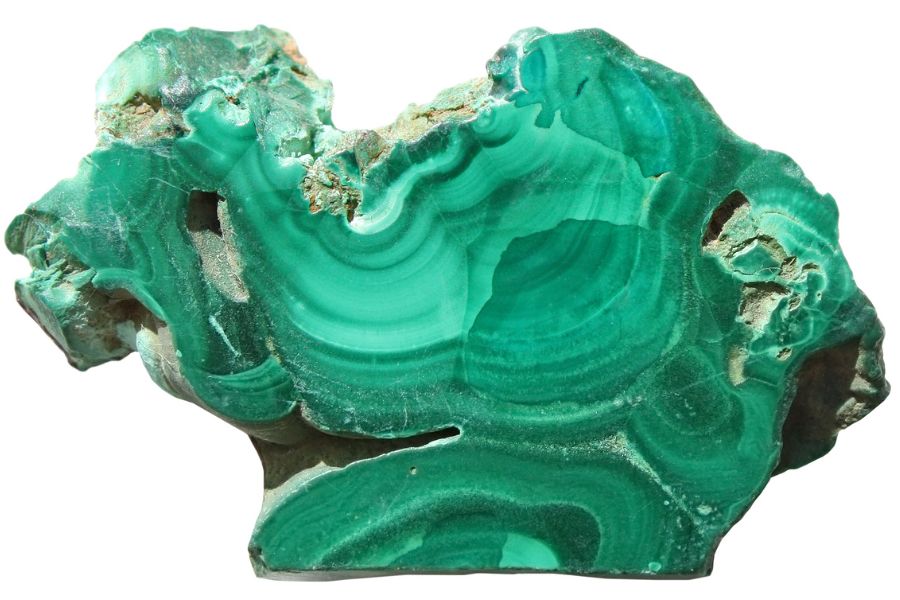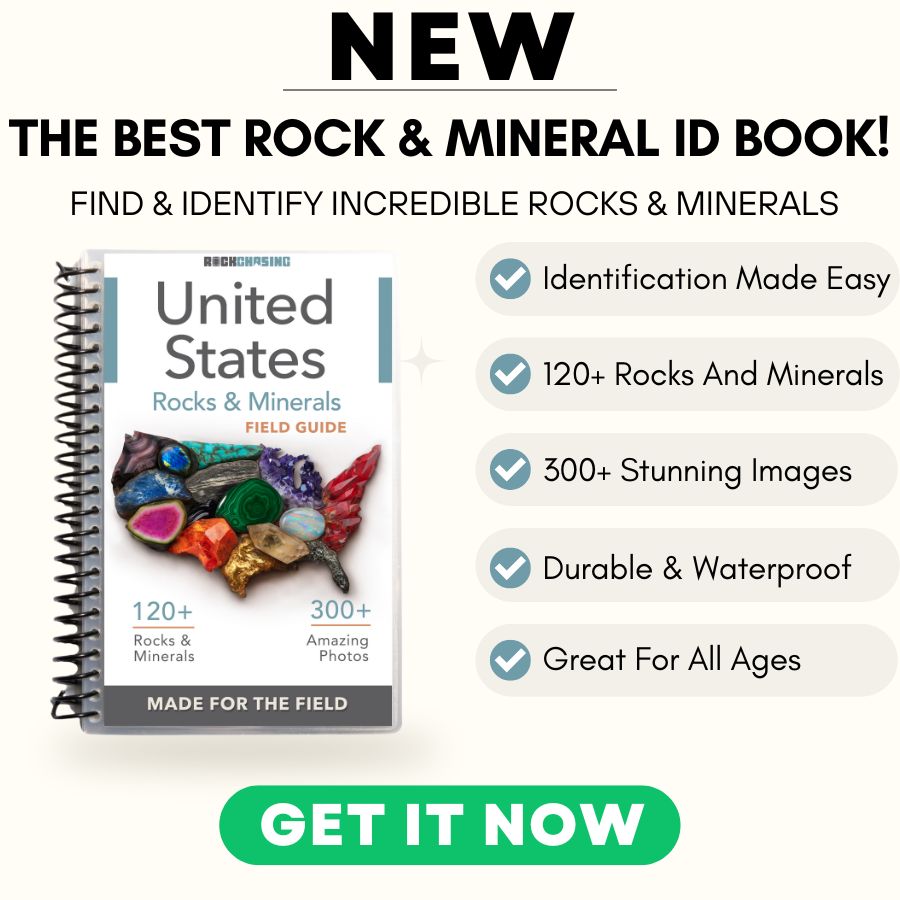If you’re like me and love exploring the great outdoors, you know Utah is full of surprises—especially when it comes to rocks, minerals, and gems.
From stunning geodes to sparkling turquoise, the Beehive State offers some seriously valuable finds that can be perfect for collectors or anyone looking to make a little extra cash.
A couple of the most valuable treasures you can stumble upon include topaz and turquoise, which are both prized for their beauty and rarity.
In this guide, we’ll show you what kinds of valuable rocks and minerals you can find in Utah, and more importantly, where you can find them.
The Most Valuable Rocks, Minerals, And Gems You Can Find In Utah
These are the state of Utah’s best-kept valuable Rocks, Minerals, And Gems.
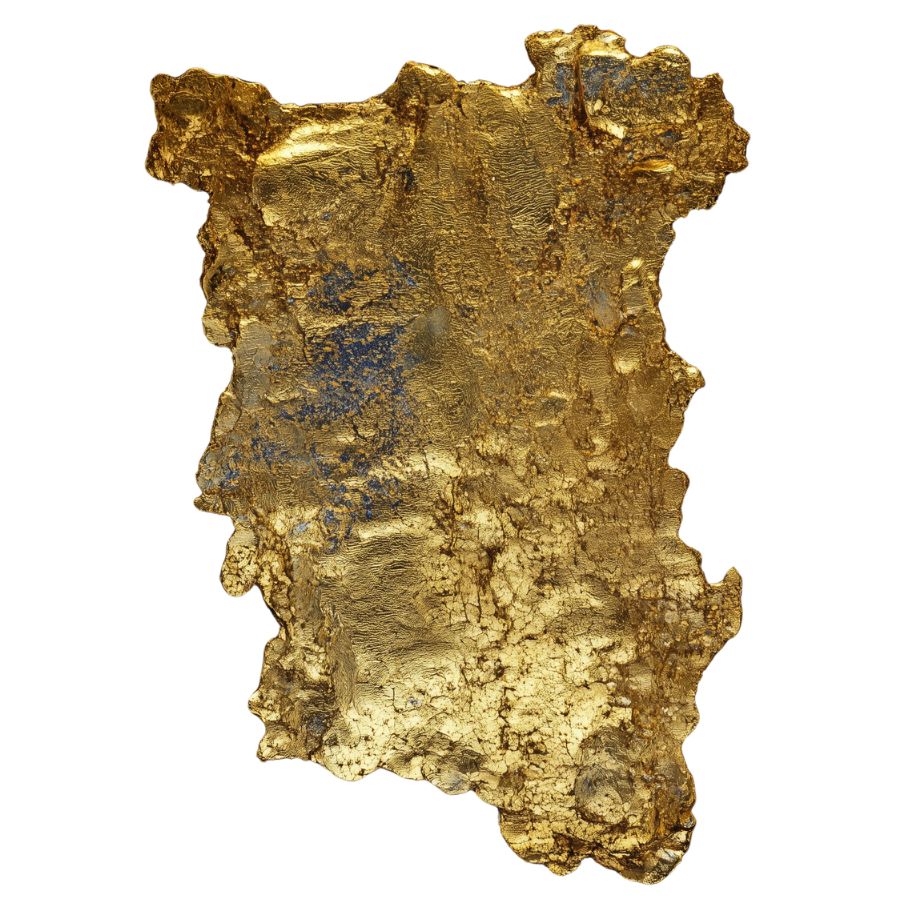
Gold
Gold has been a prized metal for centuries, and here in Utah, it’s no different. While Utah might not be the first place that comes to mind when you think of gold, the Gold has a long history in Utah, and it’s one of the most exciting and valuable minerals to find here.
There are a few different types of gold found in the state, and knowing where to look can make a huge difference in what you uncover. Let me walk you through what gold is, why it’s valuable, and where you might just find some yourself.
What It Is and the Types of Gold Found in Utah
Gold is a precious metal that has been used for thousands of years, not just for jewelry and currency but also in various industrial applications. In Utah, the gold found is primarily placer gold, which is gold that’s been eroded from its original source and carried by water to other areas.
This gold can be found in rivers, streams, and old mining sites. The state also has lode gold, which is gold found in veins of rock, often in hard-to-reach areas, requiring more effort to mine.
Why It’s Valuable
Gold has been valued for centuries because of its rarity, beauty, and usefulness. It’s considered a safe investment during times of economic uncertainty. Utah’s gold is especially valuable because of the state’s history as a mining hub.
The gold that’s still found in places like the Oquirrh Mountains is worth a lot on the market, whether you’re collecting for personal enjoyment or selling it. Looking for Gold in New Utah? Let our guide lead you to the best spots.
Great Places to Find It Here
If you’re interested in finding gold in Utah, there are a few spots that are known for their gold-bearing areas. Here are a few places to check out:
- Oquirrh Mountains: This mountain range is famous for gold mining, especially around the Bingham Canyon area. It has a rich history of gold production, and you can still find gold traces in the surrounding areas.
- Provo River: This river has a long history of placer gold deposits. The river’s sediments are rich in gold, and it’s a great spot for panning if you want to get hands-on and try your luck.
- Little Cottonwood Canyon: Known for its old mining operations, Little Cottonwood Canyon is another hotspot for finding gold. It’s worth exploring, especially if you’re near the old mine shafts and tailings piles where gold was once extracted.
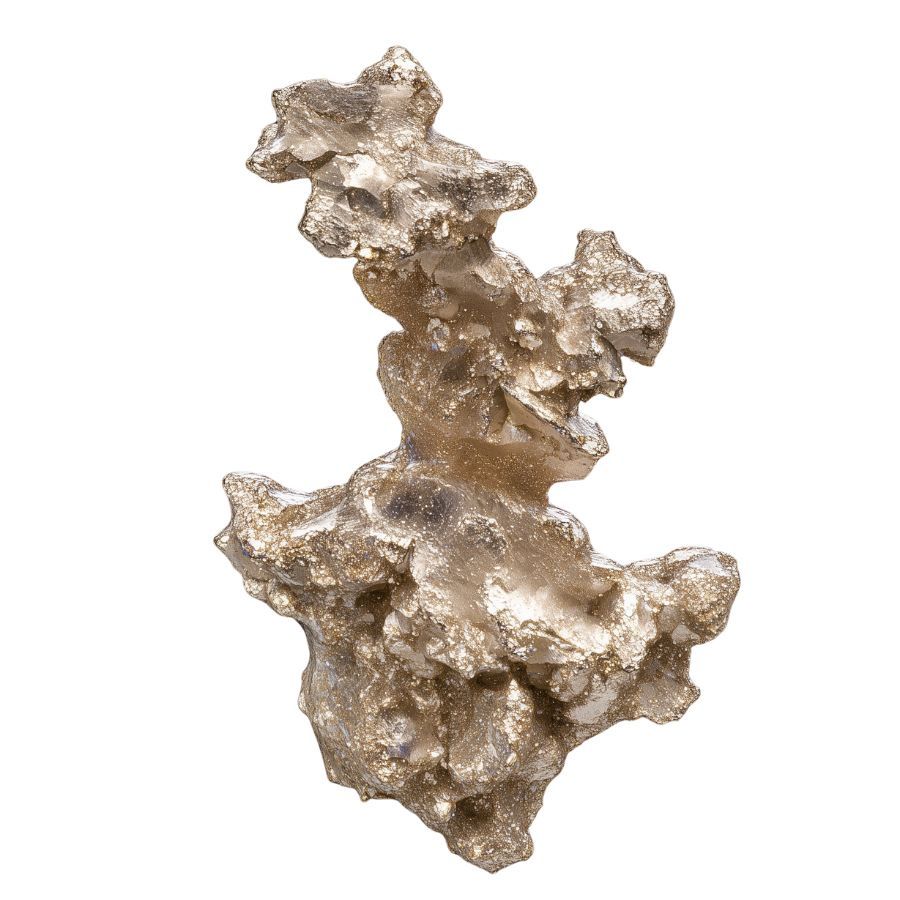
Silver
Silver is another valuable metal that has played an important role in Utah’s history, and it can still be found in various parts of the state.
Let me share with you what silver is, why it’s so valuable, and some of the best places in Utah to find it.
What It Is and the Types of Silver Found in Utah
Silver is a precious metal with a shiny appearance and excellent conductivity. It’s often found in nature as a mineral called argentite, or as part of other ore deposits.
In Utah, silver is typically found in the form of silver-bearing ores like galena, which contains both lead and silver, or as native silver in veins and deposits within rock formations.
Why It’s Valuable
Silver has been used throughout history for currency, jewelry, and industrial purposes. It’s valuable because it’s rare, durable, and has a wide range of applications, from electronics to solar panels.
The metal’s value continues to rise due to its demand in modern technology, and Utah’s silver-bearing deposits are still sought after by miners and collectors alike.
Great Places to Find It Here
If you’re hoping to find some silver in Utah, there are a few well-known locations to explore. Here are a few places to start:
- Tintic Mining District: This area, located near Eureka, is one of Utah’s most famous silver-producing regions. The district has a long history of mining silver and other metals, and you can still find silver-bearing ores in the area.
- Bingham Canyon Mine: Located southwest of Salt Lake City, Bingham Canyon Mine is one of the largest open-pit mines in the world. While primarily known for copper, the mine also contains significant silver deposits, making it a prime location for those interested in silver prospecting. The surrounding areas offer opportunities for finding silver-bearing ores as well.
- North Tintic Mountains: This is another great location where silver deposits are found. The region has a rich history of silver mining, and it’s still possible to find silver-bearing ores in the area, especially near old mining sites.
If you’re interested in silver prospecting, Get the inside track on finding Silver in Utah with our guide!
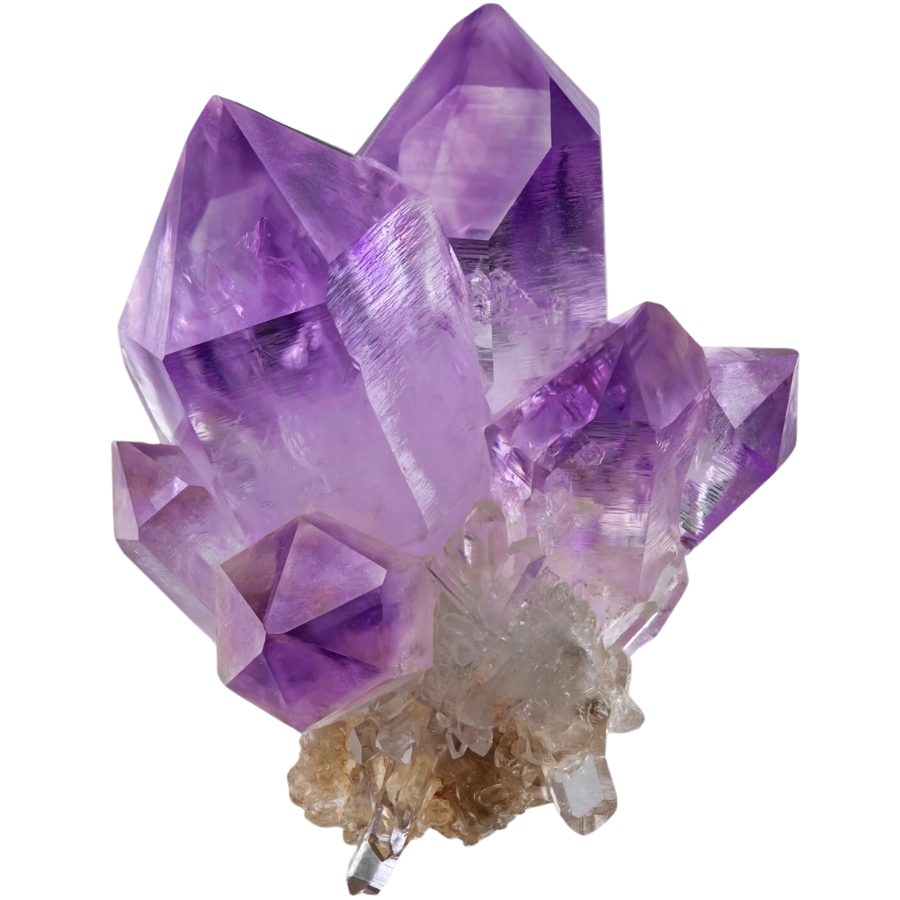
Amethyst
Amethyst is a stunning purple variety of quartz. It forms in geodes and can be found in a variety of shades, from pale lavender to deep, vibrant purple.
The amethyst crystals in Utah are some of the most well-known in the U.S., and if you’re into gem hunting or just want to find something unique, this stone is a great place to start.
What It Is and the Types of It Found in the State
Amethyst is a purple variety of quartz, made up of silicon dioxide and iron. The iron impurities give amethyst its signature purple hue. In Utah, the amethyst you’ll find is often in the form of geodes, which are hollow rocks lined with crystals.
The crystals can vary in color, ranging from light lilac to a deep violet. Some areas in Utah even have amethyst crystals that are larger and more vibrant than others, making them especially attractive for collectors.
Why It’s Valuable
Amethyst has been highly valued for centuries. Its vibrant color and the fact that it’s a quartz make it a relatively affordable gem compared to rarer stones, but it’s still prized in the jewelry market.
Amethyst is also believed to have healing properties, such as reducing stress and enhancing spiritual awareness, which only adds to its appeal.
Great Places to Find It Here
While Utah isn’t necessarily famous for amethyst, there are still several places where you might get lucky and discover some beautiful specimens.
- Topaz Mountain: This spot is well-known for its treasure trove of gems and minerals, including amethyst. While it’s most famous for topaz, visitors can sometimes find small, purple amethyst crystals in the area as well. Be sure to check out the quartz pockets in the region for a chance to unearth these beauties.
- Red Canyon: Located in the western part of the state, this area is famous for its colorful landscapes, and if you’re lucky, you can spot some amethyst crystals along the way. Red Canyon is often overlooked, making it a good spot to explore without large crowds.
- Little Sahara Recreation Area: Although it’s better known for sand dunes, Little Sahara also has some great spots to search for amethyst. The surrounding areas are home to various quartz veins, and on rare occasions, you may find some hidden amethyst crystals. Keep your eyes peeled as you explore the rocky regions!
Explore everything to know about Amethyst in Utah with our guide – packed with must-know tips.
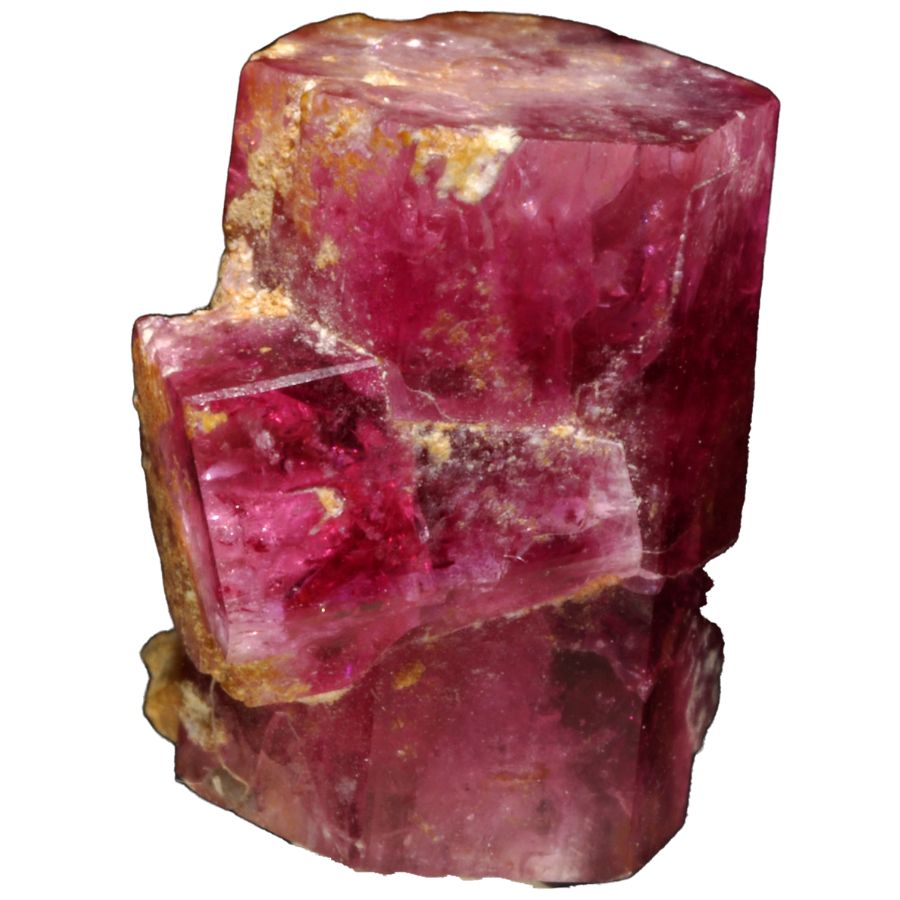
Red Beryl
Red beryl, also known as bixbite, is one of the rarest gemstones in the world, and Utah is home to the only significant deposits of this remarkable mineral.
If you love hunting for rare gemstones, Utah is the best place to search for red beryl. Whether you’re a seasoned rockhound or just starting, knowing where to look can increase your chances of finding this elusive gem.
What It Is and the Types of It Found in the State
Red beryl is a rare variety of beryl colored by manganese. It forms in specific volcanic conditions, making it far less common than other beryl varieties like emerald and aquamarine. In Utah, red beryl is found primarily in the Wah Wah Mountains, where its rich red color can range from bright pinkish-red to deep crimson.
Unlike other types of beryl, which can be found in multiple locations worldwide, gem-grade red beryl has only been confirmed in a handful of places. Utah produces the finest crystals.
Why It’s Valuable
Red beryl’s value comes from its extreme rarity and vibrant color. It’ i’s estimated to be thousands of times rarer than diamonds, making fine specimens highly prized among gem collectors. Stones over one carat are also exceptionally uncommon.
Beyond its beauty, red beryl is also significant to mineralogists because of its unique formation conditions.Beyond its beauty, red beryl is also significant to mineralogists because of its unique formation conditions.
Great Places to Find It Here
Finding red beryl in Utah requires patience and the right location. While most known deposits are on private land or in mining claims, there are still places where rockhounds can try their luck. Here are a few spots worth exploring:
- Wah Wah Mountains: The best-known source of red beryl, this rugged mountain range has produced some of the finest specimens ever found. The Ruby-Violet claim is the most famous site, though access is limited to mining operations.
- Thomas Range: Known for topaz, this area also contains occasional red beryl discoveries. While much less abundant here, the possibility of finding a rare crystal makes it an exciting place to search.
- Beaver County: Some lesser-known locations in Beaver County have yielded small red beryl crystals, though they are not as common as in the Wah Wah Mountains. Exploring exposed rhyolite formations may lead to interesting finds.
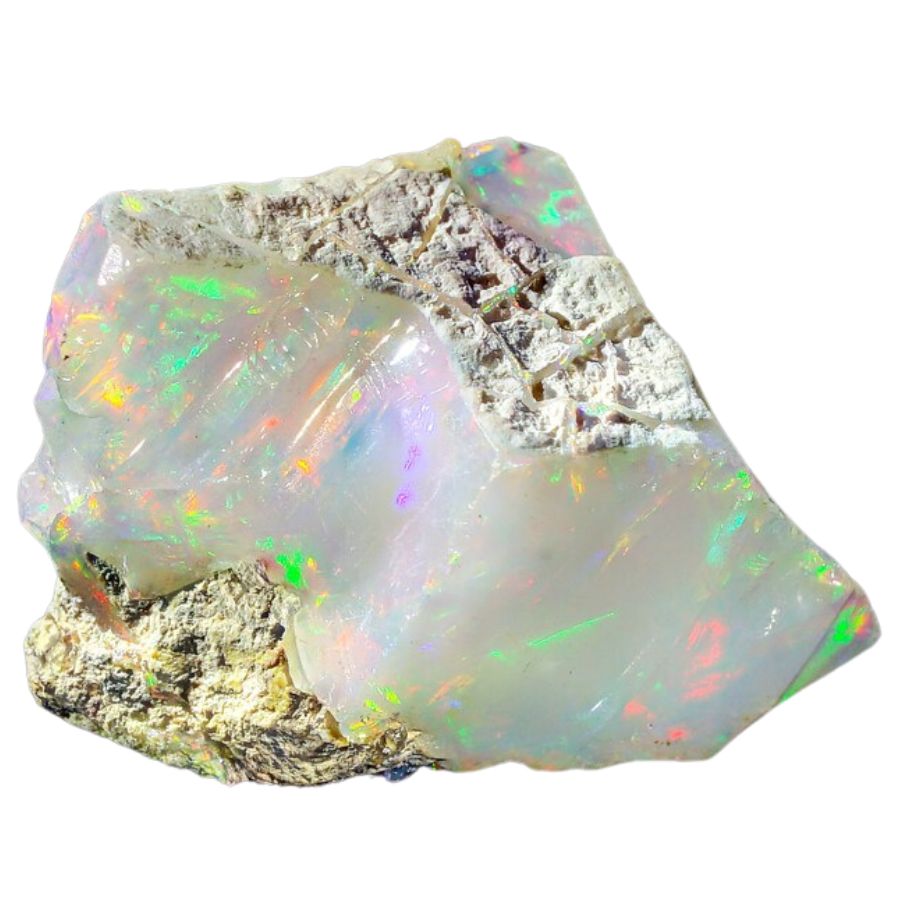
Opal
Utah is home to some of the most beautiful and rare opal specimens in the country. Whether you’re a seasoned rockhound or just starting out, the state offers a unique opportunity to discover these colorful gems.
Opal found in Utah can vary in appearance, and it’s a prized find for collectors, thanks to its incredible range of hues and the way it plays with light. Looking for Opal in Utah? We’ve mapped out the best spots for you in our guide!
What It Is and the Types of It Found in the State
Opal is a mineraloid composed of hydrated silicon dioxide, and it’s known for its stunning color play, where different hues appear depending on the angle of the light.
In Utah, you can find a variety of opal types, including precious opal, fire opal, and common opal.
Why It’s Valuable
Opal’s value comes from its rare and stunning color displays, which make it highly desirable in the jewelry market. The more vibrant the play of colors in the opal, the more valuable it is. Utah’s opals, particularly the precious and fire varieties, are highly prized for their beautiful color shifts and are sought after by collectors and jewelers alike.
The opal found in Utah is also notable because it forms in unique, volcanic environments, making it an exciting find for anyone exploring the state’s geology.
Great Places to Find It Here
Utah’s unique geology, including its volcanic history, makes it an ideal location for finding opals. If you’re looking to search for opals, here are a few spots you should check out:
- Opal Hill (near Dugway): This area is one of the most famous opal-producing regions in Utah. Opal Hill is known for its precious opal, and many rockhounds have successfully found stunning specimens here.
- The Wah Wah Mountains: Located in western Utah, the Wah Wah Mountains are home to some of the state’s finest fire opals. The area also offers beautiful scenery and a quiet environment for rockhounding.
- Spencer Opal Mine: If you’re looking for a more structured rockhounding experience, the Spencer Opal Mine in southern Utah offers the chance to dig for opals. The mine produces high-quality precious opals, and it’s a fun spot for both beginners and experienced collectors.

Topaz
Utah is home to some of the most beautiful and sought-after topaz crystals, making it a must-visit spot for rockhounds and collectors alike. Known for its stunning color variety and impressive crystal formations, topaz in Utah is an exciting find.
What It Is and the Types of It Found in the State
Topaz is a silicate mineral that comes in a wide range of colors, from clear and colorless to shades of yellow, blue, and even pink. The most common variety of topaz found in Utah is the golden-yellow type, but blue and pink topaz can also be found, making it an even more exciting gem to search for.
In Utah, you’ll most often find topaz in its natural crystal form, with well-formed, sharp edges and a distinct prismatic shape. The golden-yellow topaz found in the state is particularly prized due to its vibrant color and clarity.
Why It’s Valuable
Topaz is valuable not only for its striking appearance but also for its relative rarity, especially in its large, well-formed crystals. Topaz is used in fine jewelry, and the larger, more flawless stones can fetch a high price.
Additionally, topaz is considered a gemstone with healing properties, believed to bring energy and happiness to its owner, which adds to its appeal. If you’re lucky enough to find a beautiful specimen in Utah, you could have a stunning gem for your collection or jewelry piece.
Great Places to Find It Here
Utah is a fantastic place to hunt for topaz, with many locations throughout the state where you can try your luck. Here are some of the best places to search for topaz:
- Topaz Mountain: Located near the town of Delta, Topaz Mountain is one of the most well-known spots in Utah for finding topaz. The area is famous for its golden-yellow topaz crystals, and rockhounds from all over the world visit to search for these stunning gems. The terrain can be rugged, but the hunt is worth it.
- Fishlake National Forest: This large national forest in central Utah is home to many hidden treasures, including topaz. While not as widely known as Topaz Mountain, Fishlake offers a more remote and quiet experience for those looking for a peaceful spot to search for topaz crystals.
- Little Sahara Recreation Area: Known more for its sand dunes and off-roading, Little Sahara is also a great place to find topaz. The area’s dry, rocky terrain is perfect for rockhounds to explore and search for topaz and other minerals.
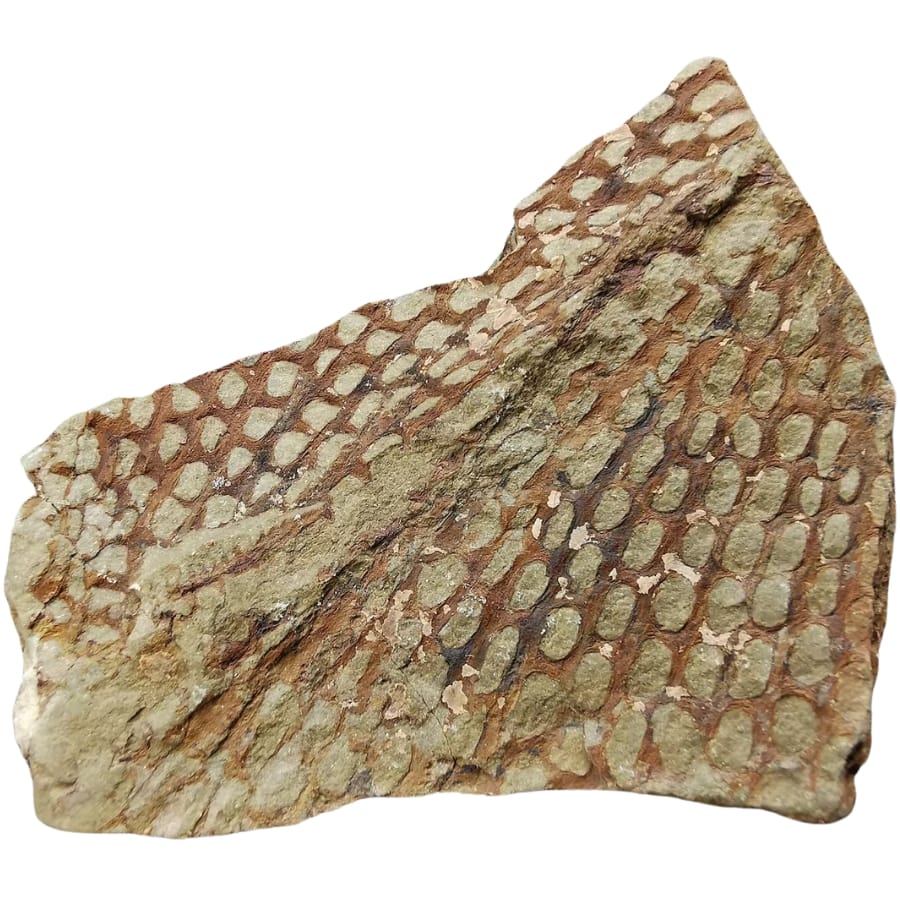
Fossils
Utah is a goldmine for fossil enthusiasts, with its rich geological history offering incredible opportunities to discover ancient creatures that roamed the earth millions of years ago.
From dinosaurs to ancient plants, Utah’s diverse landscapes have preserved an abundance of fossils, making it one of the best places in the country for paleontological discoveries.
What It Is and the Types of Fossils Found in the State
Fossils are the remains or traces of ancient life, preserved in rocks over millions of years. Utah is home to some of the most well-preserved fossils in the world. The most famous fossils found in the state are dinosaur fossils, particularly from the Jurassic and Cretaceous periods.
You can find fossils of iconic dinosaurs like Allosaurus, Apatosaurus, and Stegosaurus here. These fossils are preserved in the state’s distinct rock formations, which are incredibly rich in both plant and animal life.
Why It’s Valuable
Fossils are valuable not only because they offer a direct connection to the ancient past, but also due to their scientific significance. Paleontologists study fossils to understand the Earth’s history, climate changes, and the evolution of life.
For collectors, fossils can be incredibly valuable, especially rare specimens like complete dinosaur skeletons or well-preserved footprints. Beyond their monetary value, fossils found in Utah hold immense scientific and educational value.
Great Places to Find It Here
Utah is a fossil hunter’s dream, with many famous fossil sites scattered across the state. If you’re looking to find some impressive fossils, here are a few places to check out:
- Dinosaur National Monument: Located on the border between Utah and Colorado, Dinosaur National Monument is one of the most famous fossil sites in the world. The monument is home to a massive fossil quarry where visitors can see dinosaur bones still embedded in the rock. It’s a great spot to explore and even find some fossilized remnants of ancient creatures.
- The Utah Field House of Natural History State Park: In Vernal, this state park offers access to fossil sites in the area, including the world-famous Morrison Formation. Here, you can see fossils from the Jurassic period and learn about the history of paleontology in Utah.
- Grand Staircase-Escalante National Monument: This vast and remote area offers some of the best opportunities for fossil hunting in the state. It is particularly well-known for its prehistoric plant fossils, as well as dinosaur bones and footprints from the Cretaceous period.
Seeking to know more about the best Utah to find Fossils in Utah? Our guide is your ultimate resource!
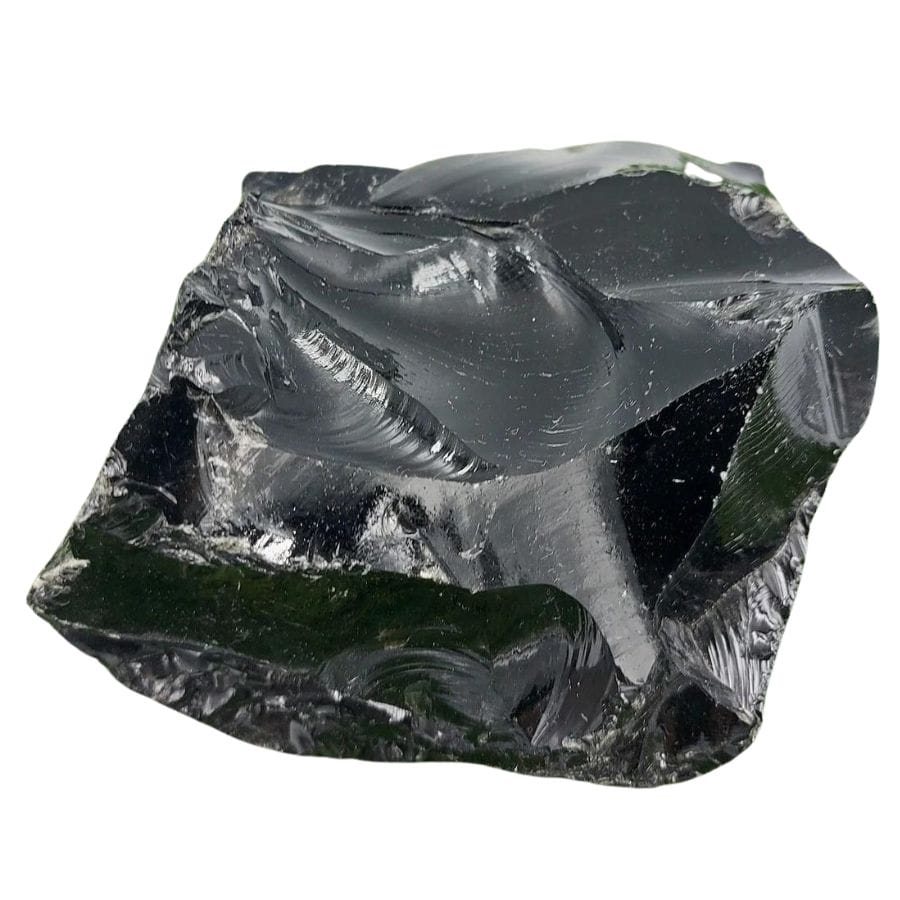
Obsidian
Utah is home to many fascinating geological treasures, and one of the most striking and valuable is obsidian. Known for its glass-like appearance and sharp edges, obsidian is a type of volcanic glass that forms when lava cools rapidly.
The state is filled with areas where you can find this beautiful and useful material, whether you’re a collector or just curious about the state’s rich volcanic history. Get the inside track on finding Obsidian in Utah with our guide!
What It Is and the Types of Obsidian Found in the State
Obsidian is a naturally occurring volcanic glass that forms when lava cools so quickly that crystals don’t have time to grow. It’s usually black, but it can also come in a range of colors like brown, red, or even green, depending on the mineral content.
In Utah, the most common type of obsidian is black, but you can also find unique varieties like snowflake obsidian, which features white, cloudy patches, and rainbow obsidian, which displays iridescent colors when viewed from different angles.
Why It’s Valuable
Obsidian has been valued for thousands of years, primarily because of its ability to be shaped into sharp, durable tools and weapons. It was used by ancient peoples to make arrowheads, knives, and scrapers.
Today, obsidian is still sought after by collectors and jewelers because of its striking appearance and unique properties. While it’s no longer used for tools, obsidian is still prized for its use in decorative items like jewelry and sculptures.
Great Places to Find It Here
Utah has some of the best locations for finding obsidian, especially in areas with past volcanic activity. Here are a few spots where you can try your luck and see some stunning obsidian for yourself:
- Black Rock Desert: Located in the west-central part of Utah, the Black Rock Desert is one of the best-known places to find obsidian. The area is littered with pieces of this shiny volcanic glass, and it’s a popular spot for rockhounds looking to score some high-quality specimens.
- Fishlake National Forest: This forest, located in south-central Utah, is another prime location for finding obsidian. The area has a history of volcanic activity, which has left behind large deposits of obsidian. You can find various types of obsidian here, including some of the rarer colors and patterns.
- Tushar Mountains: If you’re exploring the Tushar Mountains in southern Utah, you’re in for a treat. The volcanic rock formations in this area include abundant obsidian deposits. The mountains offer a beautiful, remote setting for searching for this unique rock, and you might even stumble upon some large, well-formed pieces.

Petrified Wood
Utah is known for its stunning landscapes and rich geological history, and one of the most fascinating treasures you can find here is petrified wood. This fossilized remains of ancient trees has been turned into stone over millions of years, and it’s just waiting to be discovered by rockhounds and collectors alike.
Not only is it a striking piece of history, but it also has a lot of value—whether you’re adding to a collection or just looking to learn more about the state’s natural wonders. Searching for Petrified Wood in Utah? We’ve got the ultimate guide just for you!
What It Is and the Types of Petrified Wood Found in Utah
Petrified wood forms when a tree gets buried under sediment, and over time, the organic material inside the tree is replaced by minerals like silica, iron, and calcium. The result is a stone replica of the original wood, often with vibrant colors and intricate patterns that give it a natural beauty.
In Utah, you’ll mostly find petrified wood from ancient coniferous trees that lived during the late Triassic period. The colors of the petrified wood can range from reddish-brown to yellow, and sometimes even green or purple, depending on the minerals present in the soil.
Why It’s Valuable
Petrified wood is not just fascinating because of its history, but also because of its aesthetic appeal and rarity. For collectors, finding a piece of well-preserved petrified wood can be a huge prize.
Each piece is unique, showcasing the intricate patterns and color variations that come from the mineralization process. In addition to its collectible value, petrified wood is also used in jewelry, sculptures, and other decorative items.
Great Places to Find It Here
Utah is full of places where you can hunt for petrified wood. Some areas are more well-known than others, but each spot offers a unique experience for those looking to add to their collection. Here are a few of the best places to check out:
- Fishlake National Forest: Located in central Utah, Fishlake National Forest is known for its beautiful forests and rugged terrain, but it’s also home to some great petrified wood deposits. The area is rich in geological history, and you can find well-preserved specimens in the forest and surrounding areas.
- Moab Area: Moab isn’t just known for its stunning red rock landscapes—it’s also known for its petrified wood. The area around the town is home to various fossil beds, and some remote trails lead to ancient tree remains that have been preserved as stone. The colors and patterns in this area are particularly striking, and the journey to find it adds to the adventure.
- West Desert: The West Desert area, which includes parts of the Great Salt Lake Desert, is known for its rugged terrain and wide-open spaces. Here, you can find a variety of petrified wood, some of it well-preserved and beautifully colored. It’s not as easily accessible as some other spots, but it’s definitely worth the adventure for dedicated collectors.
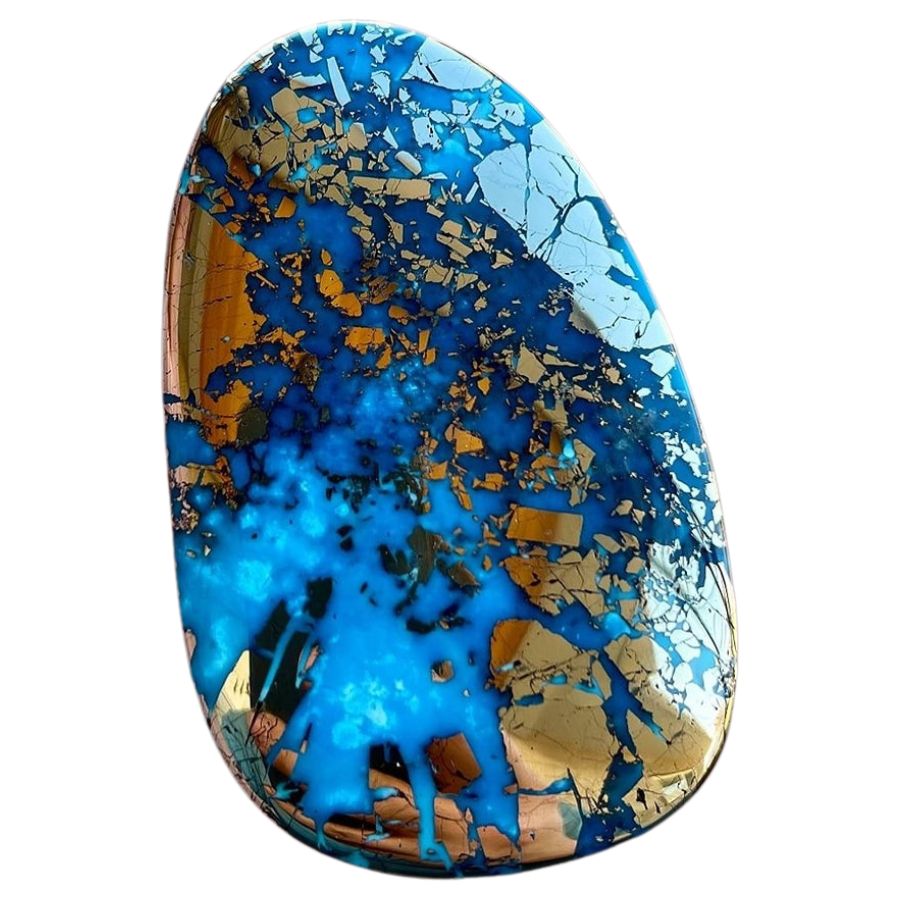
Turquoise
Turquoise is a beautiful, blue-green gemstone that’s been prized for thousands of years. It forms in arid regions, like the ones we have here in Utah, where copper-rich water seeps into the earth and mixes with other minerals to create this stunning stone.
In Utah, you can find different types of turquoise, ranging from bright blue to more greenish hues. The most popular types found here are known for their distinctive colors and matrix patterns, which are the natural lines or veins that run through the stone.
Why it’s Valuable
Turquoise is valuable for several reasons. First, its vibrant color makes it highly desirable in the jewelry market, especially in Southwestern designs. Some of the most famous turquoise, like the variety found in the Sleeping Beauty mines, can be worth a lot due to its quality and rarity.
Not only is it used in jewelry, but it’s also collected by rockhounds who enjoy hunting for the stone in its natural form. The demand for turquoise, combined with Utah’s rich deposits, makes it a great find for anyone who’s into rocks and gems.
Great Places to Find It Here
Utah is known for having some of the richest turquoise deposits in the country, and there are several areas where you can try your luck in finding it. Whether you’re out on a hike or exploring remote desert regions, there’s no shortage of places to look. Here are a few spots to check out:
- The San Rafael Swell: This area is a hotspot for finding turquoise, especially around the remote parts of the swell. The region is known for its rugged terrain and can be a bit tricky to navigate, but that’s part of the adventure. The turquoise here is often beautifully colored and highly collectible.
- The Dugway Geode Beds: Located in the western part of Utah, the Dugway Geode Beds are not only famous for geodes but also for turquoise. You can often find turquoise among the rocks here, making it a great spot for rockhounds looking for this valuable gem.
- Eagle Mountain: Located in the western part of Utah, Eagle Mountain is another known area where turquoise is found. The location is particularly rich in turquoise-bearing rocks, and you can often spot small veins or nuggets of turquoise while hiking in the area. It’s an exciting place for anyone interested in gem hunting.
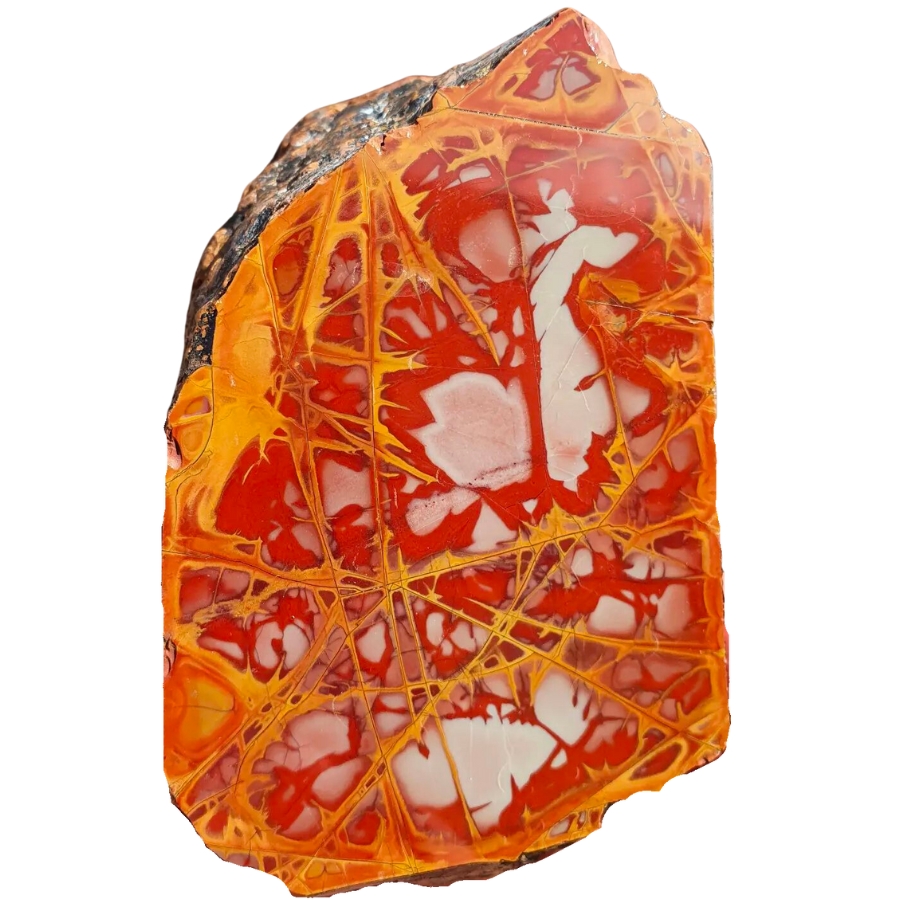
Jasper
Jasper is a type of chalcedony, a mineral that belongs to the quartz family. It’s known for its beautiful array of colors and patterns, ranging from reds, yellows, and greens to browns and even purples. The color and pattern variations make each piece of jasper unique.
In Utah, there are several types of jasper, including picture jasper, which features intricate, landscape-like patterns, and polychrome jasper, known for its vibrant and multi-colored hues. Interested? Get all the info you need on finding Jasper in Utah in our guide!
Why It’s Valuable
Jasper is considered valuable for both its aesthetic appeal and its use in jewelry and carving. The colorful patterns and the variety of types make it a sought-after gemstone for both amateur rockhounds and professional jewelers.
Many people appreciate jasper because of its durability, making it perfect for crafting cabochons, beads, or even ornamental pieces. It’s also a popular choice among collectors looking for one-of-a-kind specimens to add to their collections.
Great Places to Find It Here
Utah’s diverse landscapes offer plenty of opportunities to hunt for jasper. Whether you’re looking for a beautiful addition to your rock collection or hoping to strike it lucky and find a particularly stunning piece, these spots are worth checking out:
- The West Desert: The rugged desert areas in western Utah are rich in jasper deposits, particularly picture jasper. The terrain can be harsh, but it’s known for producing some of the most beautiful and intricate patterns in jasper, making it a top destination for rockhounds.
- The Uinta Mountains: Located in northeastern Utah, the Uinta Mountains are home to a wide variety of jaspers, including polychrome jasper. The rugged terrain and remote areas make it a great spot for collectors who are looking for something unique and willing to hike to find it.
- Red Rock Canyon: Situated in southern Utah, this area is a gem-hunter’s dream, known for its rich deposits of jasper, including picture jasper and vibrant reds and yellows. The canyon’s stunning beauty also makes it a perfect place to enjoy nature while searching for some incredible specimens.
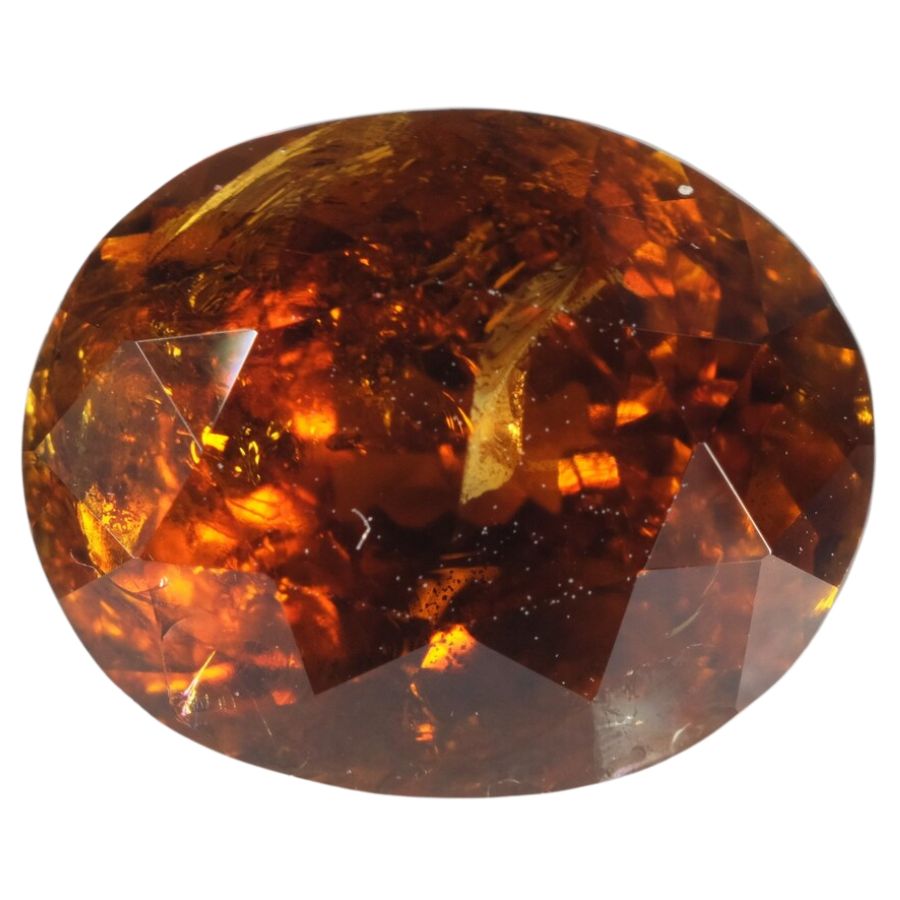
Garnet
Garnet is a beautiful gemstone known for its deep red color, though it can also be found in other colors like green, yellow, and orange. In Utah, the most common type of garnet you’ll come across is the almandine variety, which is rich in red hues.
Other types, like pyrope and spessartine, can also be found in certain areas of the state. Since these stones form in metamorphic rocks, Utah’s geological landscape is a prime location to find them.
Why It’s Valuable
Garnet is not only visually striking but also quite valuable due to its rarity and use in various industries. While it’s best known as a gemstone for jewelry, garnet is also used in industrial applications like abrasives and filtration.
The rich red varieties of garnet, in particular, are highly sought after for their stunning color and durability, making them a desirable find for rockhounds and collectors alike.
Great Places to Find It Here
Utah has a number of fantastic spots for finding garnet, especially in areas with a history of volcanic activity and metamorphic rock formations. Here are a few of the best places to check out:
- The Wasatch Mountains: These mountains, running through central Utah, are home to a variety of garnet deposits, especially in metamorphic rock formations. You’ll find garnet in areas where older rocks have undergone heat and pressure, which is perfect for collectors.
- The Uinta Mountains: Located in northeastern Utah, this range is a known hotspot for finding garnet, particularly almandine garnet. You can look for garnets in the stream beds or explore the area around the mountain’s metamorphic rocks.
- The Stansbury Mountains: Found in the western part of Utah, this area offers a chance to find both garnet and other precious stones. The combination of volcanic history and exposure to weathering has left behind garnet deposits that are often found in the area’s stream beds and rocky outcrops.
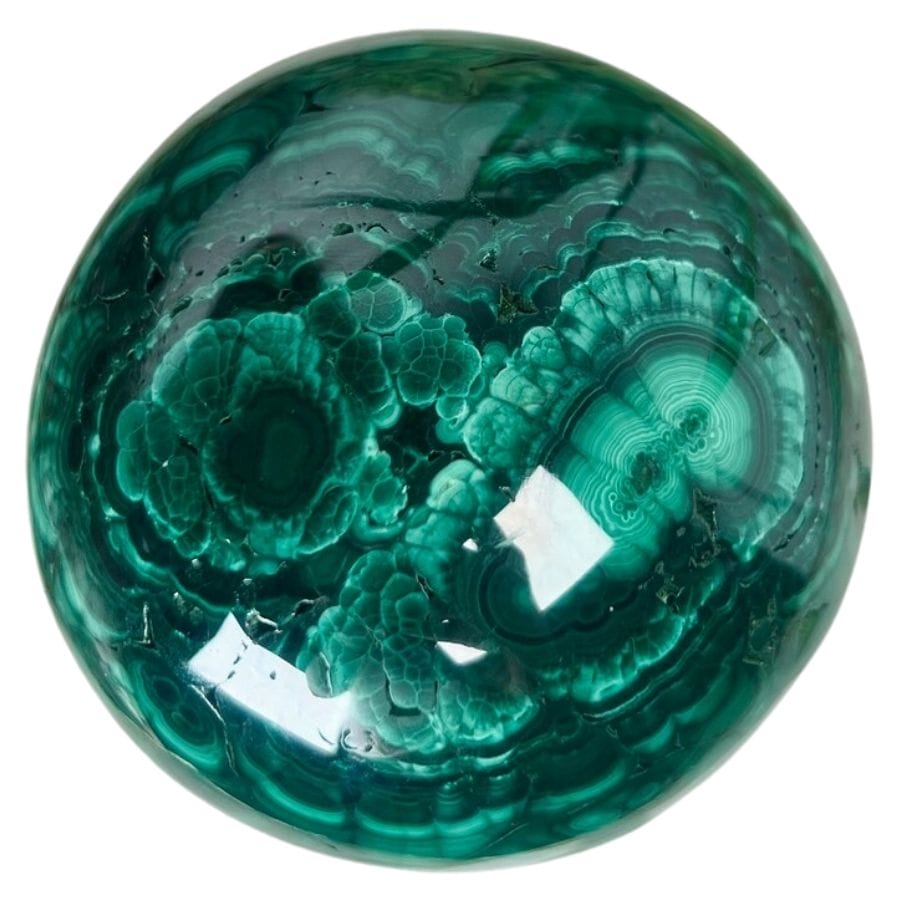
Malachite
Malachite is a striking green mineral that forms in copper-rich areas. It often has vibrant, swirling patterns that make it easy to identify, ranging from deep forest green to bright, almost neon green.
In Utah, malachite is commonly found alongside other copper minerals like azurite. When these minerals occur together, they create beautiful pieces that are in high demand among collectors. This mineral is typically found in the oxidation zones of copper deposits and is most abundant in places where copper mining has occurred.
Why It’s Valuable
Malachite is valuable for several reasons. Its rich green color and intricate patterns make it a favorite in jewelry, especially for those who appreciate unique, earthy designs. It’s also used in carvings and decorative pieces.
Beyond its aesthetic appeal, malachite has a historical significance, as it’s been used for centuries for ornamental purposes and even as a pigment in ancient art. Because it’s not found everywhere, collectors and rockhounds in Utah find it especially exciting to discover.
Great Places to Find It Here
Utah is known for its rich mining history, especially with copper, and malachite is often found in areas where copper mining took place. Here are a few of the best spots to look for malachite:
- The Bingham Canyon Mine: Located just southwest of Salt Lake City, this open-pit copper mine is one of the largest in the world. Malachite is often found here, particularly in the oxidized zones around the mine. Keep an eye out for green streaks on rocks when you explore nearby areas.
- The Silver King Mine: Located in the Oquirrh Mountains, this mine has been a source of copper, silver, and other minerals. Malachite can sometimes be found in the tailings or on the surface of the mine, where copper-bearing rocks have weathered over time.
- The San Juan Mountains: In southeastern Utah, this area is home to a lot of mineral-rich deposits, including malachite. The region has historically been known for copper mining, and you can find malachite in the area’s outcrops and streams.
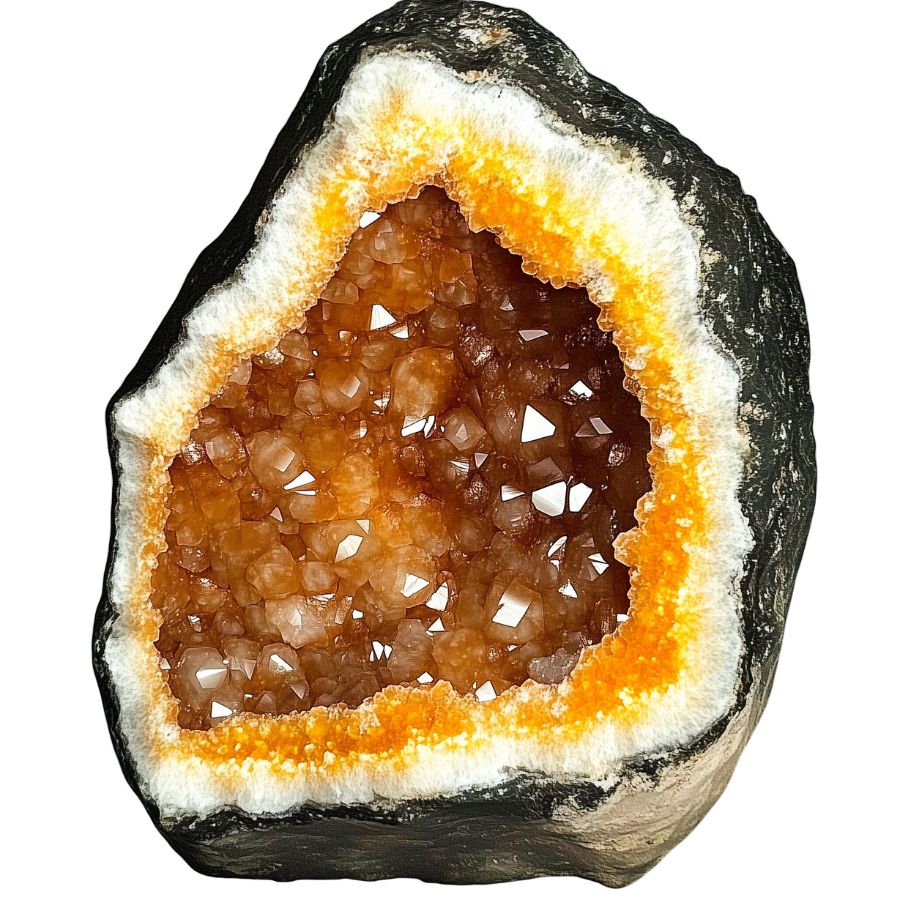
Geodes
Geodes are spherical or rounded rocks that form when mineral-rich solutions fill cavities inside a rock. Over time, the minerals crystallize inside, creating stunning interior structures that can be filled with quartz, calcite, or even amethyst.
In Utah, geodes are typically found in volcanic rock formations, and they often contain beautiful crystals like quartz or calcite, but sometimes, you can even find ones with rare minerals inside.
There are also several types of geodes found in Utah, including those filled with clear quartz, purple amethyst, and even some with vibrant chalcedony crystals. Looking for the inside scoop? Our guide to finding Geodes in Utah has got you covered!
Why It’s Valuable
Geodes are valuable for collectors because of the surprise inside each one. The exterior of a geode is often plain and unassuming, but cracking it open reveals stunning and unique crystal formations that make each one special.
The crystals inside, such as quartz and amethyst, are valued for their beauty and are commonly used in jewelry and decorations.
Great Places to Find It Here
Utah is a great state for geode hunting, with many places where you can find these hidden gems. Here are a few spots to try:
- The Clear Creek Canyon: This location, in the southern part of Utah, is known for its wide variety of minerals, including geodes. The canyon has a mix of volcanic and sedimentary rocks, making it a perfect place for finding geodes that contain quartz and calcite crystals.
- The Great Salt Lake Desert: This area is known for its volcanic rocks, and geodes can often be found in the desert’s dry, cracked earth. The crystals inside these geodes are usually quartz or calcite, and they can be quite beautiful.
- The Vernal Area: Located in northeastern Utah, the Vernal region is famous for its geodes, many of which contain beautiful quartz crystals. Head towards the Book Cliffs or the Red Fleet State Park, where geodes can sometimes be found along the ground or embedded in the rocky layers.

Agate
Agate is a type of chalcedony, which is a form of quartz that forms in a variety of colors and patterns. It’s a hard, durable gemstone that can be translucent or opaque, and it’s often known for its beautiful banded patterns in a variety of colors like red, yellow, brown, and blue.
In Utah, you can find several types of agate, including moss agate, fire agate, and landscape agate. These stones are formed when minerals like iron or copper infiltrate cavities in rocks and crystallize over time, creating the unique, eye-catching designs agates are known for. If you’re excited to discover Agate in Utah, our guide will tell you how!
Why It’s Valuable
Agates are prized by collectors and jewelry makers for their stunning appearance and the fact that each stone is unique. Their vivid colors, unique patterns, and translucency make them popular for crafting and decorative purposes.
Some varieties, like fire agate, have iridescent qualities that make them especially valuable. Beyond their aesthetic appeal, agates are also durable and easy to polish, which makes them perfect for jewelry, cabochons, and other crafted items.
Great Places to Find It Here
Utah is a great state for finding agate, with many areas known for their rich deposits. Whether you’re a seasoned rockhound or a beginner, here are a few places to check out:
- The Snake Valley Area: If you’re looking for a mix of agates and other stones, head to the area near the Nevada border, where agates can be found along with jasper, opal, and more. The rocks here are exposed along the valley floor, making it easier to find agates with some careful searching.
- The Utah-Arizona Border: Near the border, you can explore areas like the Kaibab Plateau, where agates are found in abundance. Look along stream beds or in the eroded volcanic rock formations for hidden treasures. The agates here are often vibrant and feature the characteristic banding that collectors love.
- The Vernal Area: Located in northeastern Utah, the region around Vernal is rich with agate deposits. Many of the agates here are found along the banks of dry riverbeds, with varieties ranging from banded agates to the more unique fire agates with a fiery, iridescent sheen.

